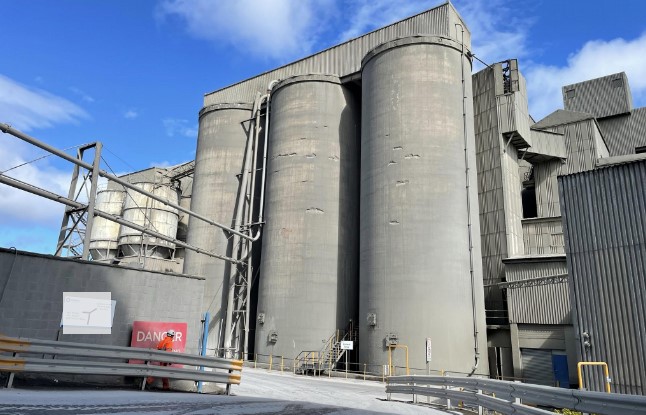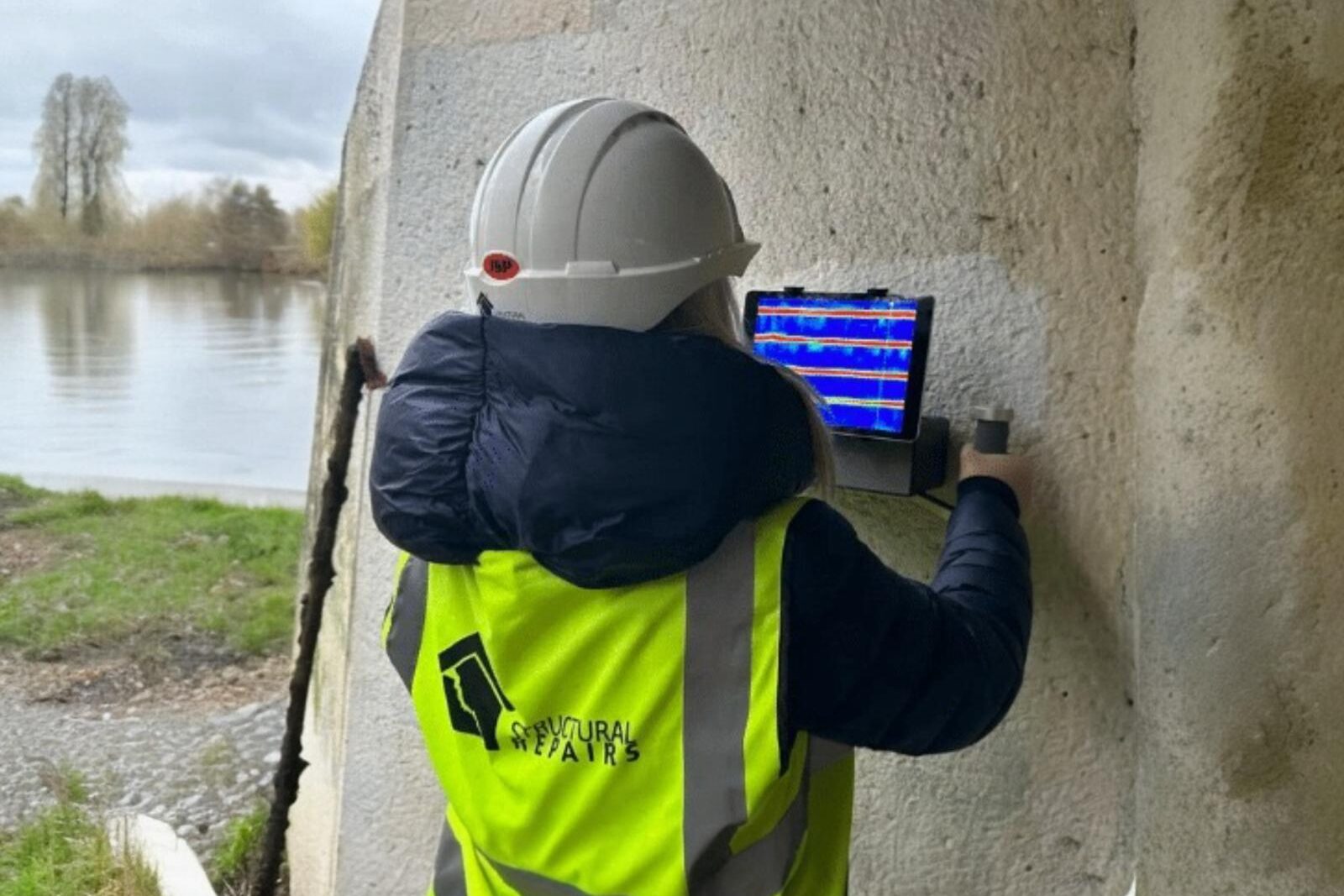Détection de l’écaillage du béton : Méthodes modernes d’identification de la détérioration du béton structurel
Chaque bâtiment raconte une histoire – à travers les chuchotements des épaufrures, des fissures capillaires et des taches subtiles que seuls les experts peuvent vraiment lire. Cet épaufrure de béton sur votre mur ? Il en dit peut-être long sur la santé de votre bâtiment. En ce qui concerne l’intégrité structurelle, l’écaillage et le décollement du béton peuvent présenter des risques sérieux qui vont au-delà des simples dommages superficiels.

Comprendre l’écaillage : Que signifie l’écaillage du béton ?
L’écaillage (également connu sous le nom d’écaillage du béton) est une forme grave de détérioration où la couche superficielle du béton se détache, révélant souvent le matériau endommagé en dessous. Ce processus d’écaillage peut affecter diverses structures, de l’écaillage des briques aux surfaces en ciment. Les ingénieurs structurels professionnels reconnaissent que ce qui semble être un écaillage mineur révèle souvent des problèmes sous-jacents plus importants qui requièrent une attention immédiate.
Le processus de détérioration et d’écaillage du béton
La détérioration des surfaces et l’écaillage agissent comme des adversaires furtifs, commençant subtilement avant de compromettre progressivement l’intégrité structurelle d’un bâtiment. La signification de l’écaillage devient évidente lorsque vous comprenez comment il se développe : tout comme le voyant de contrôle du moteur d’un véhicule, ces signes avant-coureurs – des surfaces écaillées aux taches de rouille – exigent une évaluation professionnelle immédiate. Sans une intervention appropriée, les épaufrures peuvent dégénérer en problèmes structurels majeurs susceptibles de compromettre la sécurité de l’ensemble du bâtiment.
Le destructeur silencieux : Interaction de l’eau et de l’acier dans le béton épaufré
Au cœur du processus d’écaillage se trouve la vulnérabilité des barres d’armature en acier. Ces éléments structurels essentiels, noyés dans le béton, courent un risque important lorsqu’ils sont exposés à l’humidité. La réaction chimique qui en résulte déclenche la rouille, ce qui provoque la dilatation de l’acier. Cette expansion crée une pression supplémentaire dans le béton, ce qui entraîne un écaillage et accélère le cycle de détérioration. Pour comprendre ce qu’est l’écaillage du béton, il faut d’abord reconnaître ces interactions fondamentales.
La menace chimique : Carbonatation et écaillage du béton
La menace la plus insidieuse vient peut-être de la carbonatation, un processus chimique qui affecte les structures en béton dans le monde entier et qui conduit souvent à l’effritement. Le dioxyde de carbone atmosphérique réagit avec l’hydroxyde de calcium du béton et réduit progressivement le pH du matériau. Cette transformation chimique compromet la protection naturelle que le béton offre à ses armatures en acier. Le résultat se manifeste par une formation accélérée de rouille, une dégradation de la surface et, en fin de compte, la nécessité d’effectuer des réparations structurelles importantes.
Évolution des méthodes de détection : Des simples robinets aux tests d’éclatement avancés
Au cours des décennies précédentes, l’évaluation structurelle reposait sur des approches simples mais pratiques. La principale méthode, l’essai de percussion, consistait à frapper les surfaces en béton pour identifier les épaufrures potentielles en écoutant les sons creux qui pouvaient indiquer des problèmes structurels. Si des professionnels expérimentés pouvaient obtenir des résultats raisonnables en détectant les premiers signes d’écaillage, cette méthode manquait de précision et de fiabilité. Les carottages offraient un aperçu plus détaillé de la détérioration, mais nécessitaient de percer les structures – un processus efficace mais destructeur qui pouvait potentiellement compromettre l’intégrité structurelle.
Solutions modernes : La révolution dans la technologie d’évaluation de la détérioration des surfaces
L’évaluation structurelle d’aujourd’hui a évolué vers un mélange sophistiqué de technologies avancées, marquant un changement radical par rapport aux méthodes traditionnelles. Les méthodes modernes de balayage pour détecter la délamination et l’écaillage du béton représentent un bond en avant, comparable à l’évolution des stéthoscopes de base vers les appareils d’IRM dans le domaine du diagnostic médical. Le géoradar (GPR), la technologie des ultrasons et les capacités de cartographie en 3D permettent désormais d’obtenir des informations sans précédent sur les structures en béton épaufrées. Ces méthodes non invasives permettent une détection précise de la détérioration, des vides, de la corrosion des barres d’armature et des infiltrations d’eau, éliminant ainsi la nécessité de procéder à des essais destructifs tout en offrant une précision supérieure.

L’avis d’un expert : L’intérêt d’une détection précoce de l’écaillage
Selon Roger Line, PDG de Structural Repairs et auteur de “Extending the Life of Buildings and Structures”, les parallèles entre la santé structurelle et la prévention de l’écaillage sont frappants. “Considérez cette perspective : vous n’attendriez pas qu’une dent tombe pour aller chez le dentiste. Le même principe s’applique à la prévention de la détérioration des surfaces et au maintien de l’intégrité des bâtiments”, explique M. Line.
Grâce à des méthodes de détection avancées, les problèmes d’écaillage peuvent être identifiés et traités avant qu’ils ne se transforment en problèmes coûteux.
Cette approche proactive de la maintenance, plutôt que des réparations réactives, s’est avérée révolutionnaire sur le terrain. Lorsque les épaufrures potentielles sont détectées à temps, cela permet non seulement d’économiser des coûts importants, mais aussi de prolonger la durée de vie des bâtiments de plusieurs dizaines d’années. L’intégration de la technologie moderne à l’expertise en ingénierie offre aujourd’hui une précision inégalée en matière d’évaluation structurelle et de détection des détériorations. Chaque bâtiment fait l’objet d’une attention méticuleuse, ce qui garantit sa longévité et sa sécurité pour les années à venir. Plus qu’une simple avancée technologique, il s’agit d’un changement fondamental dans notre façon d’aborder la préservation des bâtiments et l’intégrité structurelle pour les générations futures.
Vous recherchez des services professionnels d’évaluation du béton ? Contactez notre équipe d’experts en structure pour une évaluation complète de votre bâtiment.